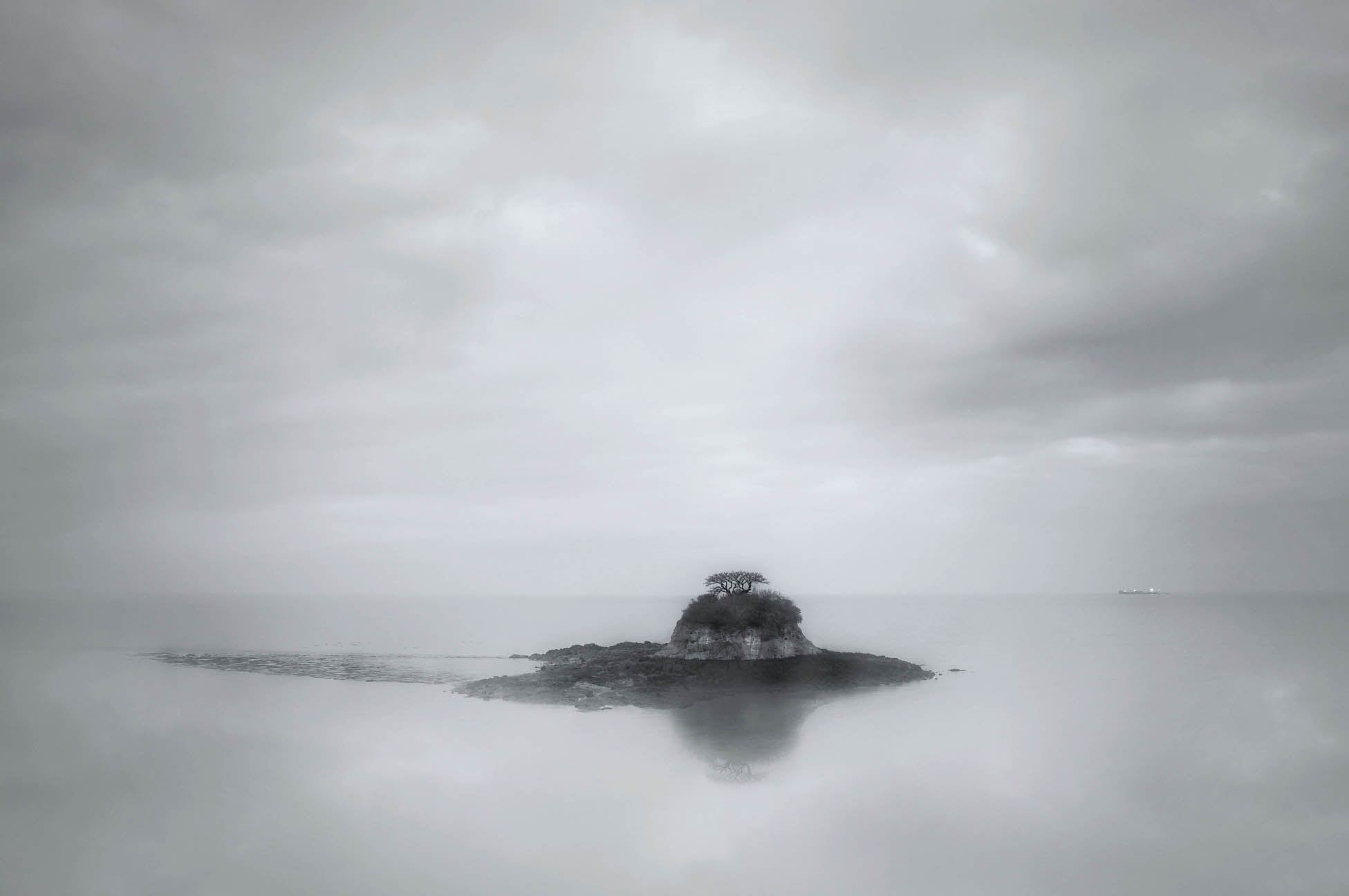Shades of Gray
By definition, every black and white image consists of a range of grays. I’ve noted that the majority of black and white photos work by contrasting dark against light (pages 18–20). These darks and lights are shades of gray, of course.
High-key images, consisting of a subtler shade of gray, work with the tones toward the lighter end of the scale (pages 54–57). Low-key images primarily use the dark tones on the grayscale (pages 58–61).
Yet another effective black and white strategy is to employ midtones as the predominant compositional element. These compositions use midtone gray values to work together in an endless compositional dance. The nearness of tonal values means that there are relatively few sharp breaks in a predominantly midtone gray composition—you won’t find many hard black forms or white areas that are highlights.
When a midtone gray composition works, it is because the eye looks to the subtlety of the relationship between the tonal gradations. So when you are considering this kind of composition, be careful to present tonal values that work well together.
You should look for subjects that present intricate patterns of grays working off one another. Do not expect the drama of a dark shape against a light background, the Zen simplicity of lines in a high-key setup, or the unrelenting angst of a low-key photo. The virtue of the grayscale is a virtue of subtlety.
As opposed to high-key and low-key imagery, midtone photos should be captured so they are neither underexposed nor overexposed. To achieve this kind of “just right” Goldilocks exposure, consider using your light meter set to average the scene.
If what you see in front of you tends to be a little dark, you may have to lighten things a bit with your exposure. Conversely, if things seem too bright you may have to underexpose slightly to dampen things down.
Cloud, CityLife, Milano—CityLife is a residential, commercial, and business district a short distance from central Milan, designed by the famous architects Zaha Hadid, Arata Isozaki, and Daniel Libeskind. The photograph shows a detail of the Generali Tower, also known as “The Twisted One,” a skyscraper designed by the Anglo-Iraqi architect Zaha Hadid, who was the first woman to win the Pritzker Architecture Prize.
The image emphasizes the curves inherent in Hadid’s design and also showcases the way the reflective surfaces amplify the tonal values of the clouds that are reflected in the glass of The Twisted One. I decided to present this photo in monochrome, essentially a study in grays, to better show the lines and characteristics of this incredibly distinctive showcase building without the distraction of color.
Nikon D810, 92mm, circular polarizer, 1/125 of a second at f/13 and ISO 800, hand held; converted to monochrome using Photoshop Adjustment layers.
Lonely Islet—In this photo, a lonely islet in San Francisco Bay appears to be much darker than the surrounding water and sky. But this is to some extent an illusion. In fact, none of the grays in the image are very dark—and the entire photo has a low tonal range, biased towards the high-key within the context of the great tonal range of grays.
A viewer who spends some time with this photo will be intrigued to pick out details such as the reflection of the tree on the island and the lit boat in the background—which at first glance appears to be a fairly featureless gray.
The lit freighter is a give-away that all is not what it seems in the lighting of this photo. In fact, the photo was taken at about midnight on a cloudy night with the extensive lighting coming from diffused moonlight (the moon was behind the clouds). One of the morals is that the more diffuse the lighting on a subject, the more likely you are to get extensive gray tonalities.
Nikon D300, 18mm, 2 seconds at f/8 and ISO 100, tripod mounted; converted to monochrome using Photoshop Adjustment layers and Nik Silver Efex Pro.


